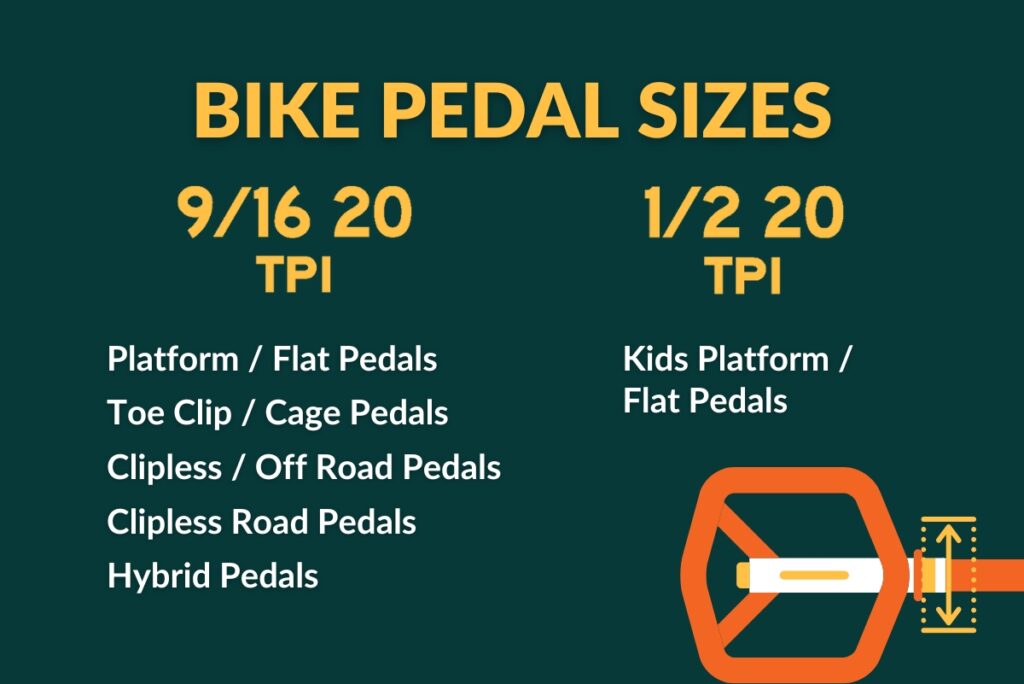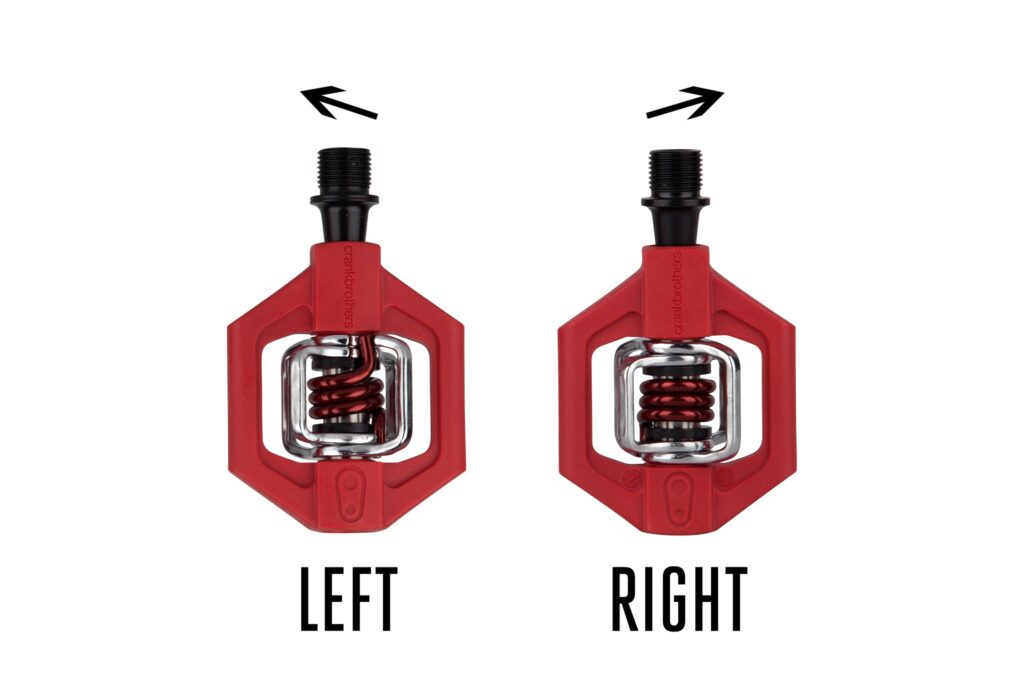Have you ever found yourself staring at your bike, wondering if those pedals are truly universal? Maybe you’re considering an upgrade or just need a replacement, and the question nags at you: “Are bike pedals universal?”
It’s a query that can leave any cyclist, whether novice or experienced, feeling puzzled. But fear not, because unlocking the mystery of bike pedal compatibility might just be the key to your perfect ride. Imagine gliding smoothly down the road, your feet firmly planted on pedals that feel just right.
That sense of connection between you and your bike enhances every journey, turning simple rides into memorable adventures. But choosing the wrong pedals can lead to frustration or even discomfort. That’s why understanding pedal compatibility is crucial for ensuring your cycling experience is both enjoyable and safe.
We’ll dive deep into the world of bike pedals. You’ll discover whether one size fits all, learn about different types and standards, and find the best options for your ride.
Get ready to pedal your way to clarity and confidence, because this knowledge is bound to transform your cycling experience. Read on to find out everything you need to know about bike pedals!
Types of Bike Pedals

Credit: viviebikes.com
The right bike pedal can make a big difference. Pedals come in various types and each has unique features. Understanding these types helps you find the best fit for your needs.
1. Flat Pedals
Flat pedals are common and easy to use. They have a simple design that suits casual biking. These pedals are great for beginners. You can wear any type of shoe with flat pedals.
2. Clipless Pedals
Clipless pedals offer more control and efficiency. They attach to special shoes for a secure grip. Cyclists prefer them for long rides. They help maintain a steady pace and improve pedaling power.
3. Toe Clip Pedals
Toe clip pedals provide stability and control. They have a cage that wraps around your toes. This design allows better force application. Toe clip pedals are ideal for those wanting a snug fit.
4. Platform Pedals
Platform pedals have a large surface area. They provide comfort and grip during rides. These pedals work well on rough terrains. Suitable for mountain biking or casual city rides.
Compatibility Factors

Credit: www.amazon.com
Bike pedals aren’t universal, varying by thread size and type. Most adult bikes use a standard 9/16-inch thread. Children’s and some specialized bikes might differ, needing specific pedals. Always check your bike’s specifications before purchasing new pedals to ensure a perfect fit.
When you’re looking to replace or upgrade your bike pedals, understanding compatibility factors is crucial. Not all pedals fit every bike, which can be a surprise if you’re not prepared. Knowing what to check can save you both time and frustration.
Thread Size And Type
One of the first things to check is the thread size and type. Most adult bikes use a standard 9/16″ thread, but some older or children’s bikes might use a 1/2″ thread. Imagine ordering a set of pedals online, only to find they’re incompatible because of a minor thread difference.
Crank Arm Material
The material of your crank arm can also affect pedal compatibility. Aluminum, steel, and carbon are common materials, each with different strength and weight properties. If you’ve ever tried fitting a pedal into a carbon crank arm, you know how important it is to ensure the threading matches perfectly to avoid damage.
Cleat System Compatibility
If you’re using clipless pedals, the cleat system is another factor to consider. Shimano’s SPD and Look’s Keo are popular systems, but they aren’t interchangeable. Think back to the first time you tried clipping in, only to realize your shoes didn’t match your pedals. That frustrating moment is avoidable with some simple research.
Riding Style And Terrain
Your riding style and typical terrain also play roles in pedal choice. Mountain bikers may prefer pedals with wider platforms for better stability, while road cyclists might opt for lighter, streamlined options. Have you ever attempted a trail ride with road pedals? The struggle to maintain balance can be a lesson in choosing the right gear for your rides.
Budget Considerations
Finally, your budget will influence your pedal options. High-end pedals offer advanced materials and precise engineering, but many affordable options perform well for everyday use. Would you invest in top-tier pedals for casual rides, or save that expense for other bike upgrades? Balancing cost with performance can lead to a more satisfying biking experience.
Understanding these compatibility factors helps ensure you get the right pedals for your bike, enhancing your overall cycling experience. So next time you’re on the market for new pedals, remember these key points to make an informed choice.
Choosing The Right Pedals

Credit: www.amazon.com
Bike pedals aren’t always universal. Compatibility depends on the bike type and pedal model. Check the thread size and pedal style to ensure a proper fit for your bicycle.
Choosing the right pedals for your bike is crucial for comfort, performance, and safety. Pedals are not one-size-fits-all, and selecting the wrong type can lead to a less than enjoyable riding experience. Whether you’re cycling through city streets or tackling rugged trails, the right pedals can make all the difference.
Different Pedal Types
Bike pedals come in various types, each designed for specific biking styles. Flat pedals are popular for beginners and casual riders because they’re easy to use and don’t require special shoes. Clipless pedals, on the other hand, are favored by more experienced cyclists who want better power transfer and control.
Meanwhile, platform pedals with toe clips offer a middle ground, providing some of the benefits of clipless systems without the need for special footwear. Knowing the differences helps you make an informed decision.
Considering Your Riding Style
Your riding style should heavily influence your pedal choice. If you enjoy leisurely rides around the park, flat pedals might be ideal for you. However, if you’re into mountain biking or road racing, clipless pedals might enhance your performance.
Reflect on the type of cycling you do most often and choose pedals that align with those activities. Have you ever tried switching pedal types to improve your cycling experience?
Checking Pedal Compatibility
Pedal compatibility is another critical factor to consider. Not all pedals fit all bikes. Check your bike’s crank arm to determine the pedal thread size, usually either 9/16″ or 1/2″. This ensures you get pedals that screw in securely. Mismatched pedals can cause damage or make your ride unsafe. Have you ever purchased a pedal only to realize it doesn’t fit your bike?
Balancing Budget And Quality
When selecting pedals, balancing budget and quality is essential. While it might be tempting to go for the cheapest option, investing in good quality pedals can enhance your riding experience. Consider pedals as an investment in your biking comfort and performance. Find a balance that doesn’t break the bank but still offers durability and efficiency. How much are you willing to invest in a better ride?
Testing Before Committing
Testing pedals before making a final decision can prevent future regrets. Many bike shops allow you to try different pedals on display bikes. This hands-on experience can be invaluable in helping you understand what feels right for you.
If possible, borrow pedals from a friend to test them on your own bike. Have you ever tested gear before making a purchase? It could save you time and money.
Choosing the right bike pedals is a personal journey influenced by your riding style, compatibility needs, and budget. With these insights, you’re better equipped to make a choice that enhances your biking adventures.
FAQs About Bike Pedals
Do All Bike Pedals Fit All Bikes?
Not all bike pedals fit all bikes. Pedals come in different sizes and thread types. Most common sizes are 9/16″ and 1/2″. Always check compatibility with your bike’s crankset to ensure a proper fit.
How Do I Know What Pedals To Get For My Bike?
Consider your biking style and shoe compatibility. Research pedal types: flat, clipless, or hybrid. Check reviews and recommendations. Consult local bike shops for expert advice. Ensure pedals match your bike’s crankset. Prioritize comfort and performance.
Are My Pedals 9 16 Or 1/2?
Most bike pedals are 9/16 inches, suitable for adult bikes. Children’s bikes often use 1/2-inch pedals. Check your bike’s specifications or measure the pedal’s thread diameter to confirm.
Are Bike Pedals Universal? – Final Talks!
Most bike pedals are not completely universal. There are two main thread sizes: 9/16 inch, which fits most modern bikes, and 1/2 inch, used on some older or kids’ bikes. Mountain and road bikes often use clipless pedals, while casual bikes may have flat pedals. Before buying new pedals, it’s important to check the thread size and type your bike supports to make sure they fit correctly.



